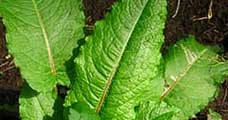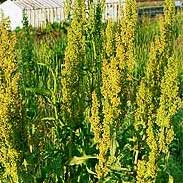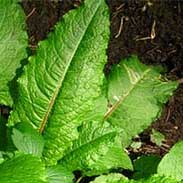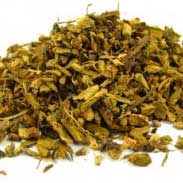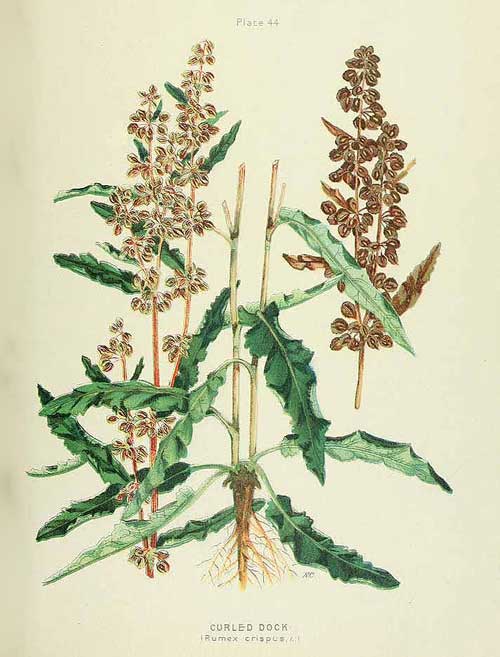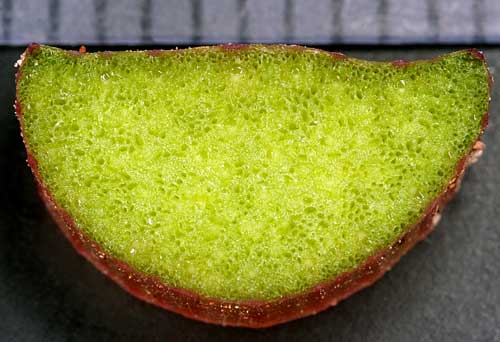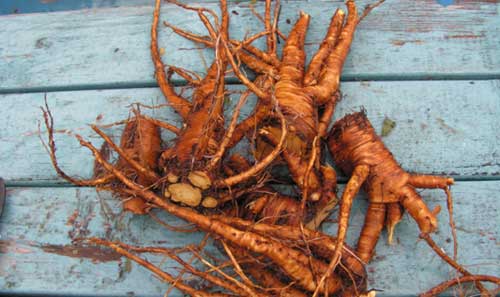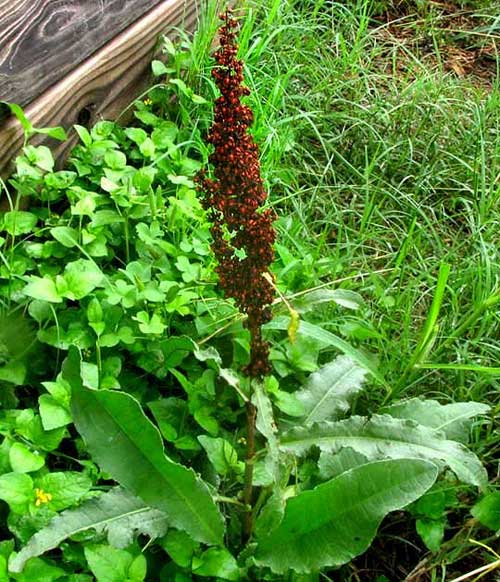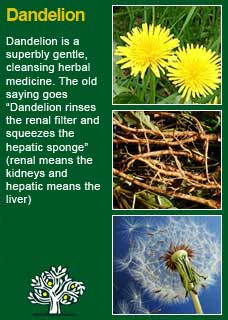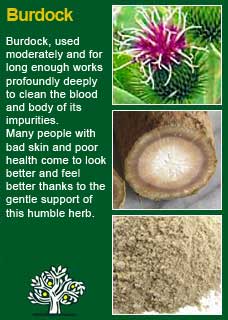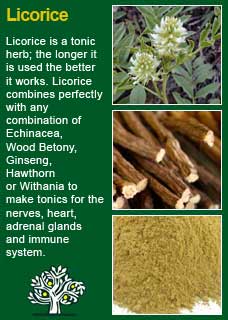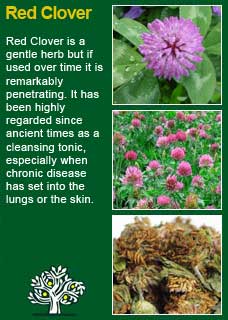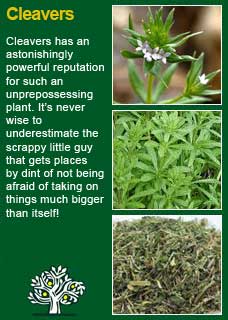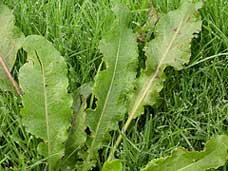
|
|
||||
| Our Pages ABOUT CONSTITUTIONAL MEDICINE
|
Yellow dock has distinctively narrow leaves that curl at the edges (hence some of its other common names). The medicinal part comes from the root which, when scraped, has a magnificent deep yellow colour.
Yellow dock has a long history of use for stimulating liver function, for cleansing the blood and for helping with chronic skin problems that were traditionally associated with ‘bad blood’. These were things such as boils, acne, dry scaly eczema and psoriasis. Native Americans used Yellow dock as a blood purifier and as an antidote for poisons. The leaves were applied to boils to bring out the infection and the crushed roots were put on cuts to cleanse and stimulate healing. TJ Lyle writes 'the root is a mild, slow stimulating, tonic alterative. It influences the mucous membrane, the skin and the secernents (secreting glands) generally. It is of much importance in all forms of scrofula, skin diseases, syphilis, ophthalmia, glandular troubles, rheumatism and piles. It is somewhat laxative to the bowels, is both hepatic and cholagogue and assists in the process of assimilation' WM Cook writes 'Yellow-dock root is an alterative of the slowly relaxing and stimulating class, leaving behind a mild tonic impression that is sometimes classed as astringent. The greater portion of its power is expended upon the skin; but the gall-ducts, small intestines, and kidneys, feel its impressions to a fair extent. Though not cathartic, it is fairly laxative; and exerts a desirable tonic influence upon the entire hepatic and digestive structures' F Ellingwood writes 'the alterative properties of this agent are underestimated. It is a kidney cleansing and general alterative of much value when ulceration of mucous surfaces or disease of the skin results from impure blood. It acts directly in its restorative influence, purifying the blood, removing toxic material, and quickly cures the disease conditions. It is valuable in ulcerative stomatitis, in nursing sore mouth, and in ulceration of the stomach with great lack of tone, combined with quercus (Oak bark) or other tonic astringent, it has no equal in these conditions. It has cured exceedingly persistent cases of exhaustive morning diarrhea, the discharges being very frequent between six and twelve o'clock' Simon Mills writes this about it 'in modern clinical practice Yellow Dock is most used as an alterative or blood-cleansing remedy, applicable to the treatment of systemic toxic states of any sort where the main trouble is seen to lie in what might be termed the 'bile-bowel' axis. In other words, if there is a skin disease, or arthritic or other toxic degenerative condition, and there is the suggestion that liver and bowel dysfunction is implicated, then Yellow dock is the remedy of choice' . T Bartam describes its actions as 'general alterative tonic, bitter, laxative, lymphatic, cholagogue' and says it can be used for 'disorders of the spleen, lymphatic glands, to promote the flow of bile in liver congestion and jaundice. Chronic dry itchy skin eruptions, boils, shingles, pruritis and rheumatism' The British Herbal Pharmacopoeia (BHP) describes Yellow Dock's actions as gentle purgative & cholagogue and says it is indicated for chronic skin disease, obstructive jaundice & constipation and specifically indicated for skin disease, especially psoriasis with constipation where it is often combined with Dandelion root. The BHP suggests a dose of 2-4 grams or by decoction and suggests a tincture in the ratio of 1:5 in 45% ethanol with a dose of 1-2mls
~ There is undoubtedly much more to the healing actions of this herb than has been investigated but what we do know is that at least part of Yellow Dock's effects are due to it containing a mixture of anthraquinones and anthraquinone glycosides. ~ The free anthraquinones remain in the intestines and cause a stimulus to the bowel by irritating the intestinal wall, the anthraquinone glycosides that are bound together with a sugar molecule are absorbed into the bloodstream and eventually stimulate a nerve centre in the lower part of the intestine that cause the muscle to become activated and so further stimulate the bowel. ~ The authors, titles and the 'where-and-when' published of nearly 20 further studies and articles on Yellow Dock are listed in a PDF found here
For some years now, against this proven and safe way of herbalism, there has been a rising tide of excessive caution and scare-mongering in many parts of the world. The same authorities that, not so long ago, decried herbal medicines as ineffectual, have now taken up a different adversarial position; that they are dangerous substances that should only be prescribed by Doctors, who of course have zero training in them. Unfortunately, the same unnecessary fear and worry has crept into many natural health websites and popular publications on herbs. Herbs that we have safely used for thousands of years, that have no reports of adverse reactions in the medical literature despite widespread use by millions of people, are suddenly described as contraindicated because of something that should have been seen as completely unimportant, or at the utmost a merely theoretical concern, such as a laboratory study on one of the herb's constituents to use an all too common example. I wonder sometimes if the writers of such articles feel that the herb will be more deserving of respect if it is thought to be a little bit dangerous, in other words more like a drug than something that has simply come out of the earth and been used by ordinary people for generations beyond count. There is just so much misinformation about herbal medicine on the internet now. Ludicrous claims and cautions abound in equal measure; it seems like one group are trying to make money out of the public whilst the other are busily trying to scare them off. I have to believe that the kind of reader who takes the time to read pages on herbs that are as extensive as this one is much less likely to be swayed by marketers or misinformers. I hope that you will keep your wits about you if you get conflicting opinions from people who have never really got to know these herbs, who have never worked with them, or learned how to use them safely and effectively. I want to remind you that the reason that herbs can never be patented and owned by any individual or corporation is because they are, and always will be, the People's medicine. They belong to all of us and it is my great hope in sharing this work that you will learn how to use them wisely for yourself, and the people you care for. Be safe, but do not be afraid.
Yellow dock does stimulate bowel activity, but it is nowhere near as cathartic as herbs like Senna or Cascara, neither is it as mild as Dandelion or Burdock in this regard. You can usually rely on Yellow dock to assist with mild constipation or bowel sluggishness to at least some degree. In reading through a number of herbal reference books on Yellow Dock I came across frequent references to it being traditionally used for things like swollen glands, irritating coughs and itchy skin; this is a herb that clearly has the power to help move stuck conditions wherever it is used. In a nutshell Yellow dock is a herb with profoundly deep cleansing properties that give it the potential to help people with diverse kinds of chronic problems with their skin, respiratory, lymphatic or digestive systems. One of the things I love about it is how you can use it for a stuck liver and bowel without causing stress or damage. As Maude Grieve says 'it has an action on the bowels similar to that of Rhubarb but operating without pain or uneasiness' I knew of Yellow dock as one of the great liver and bowel herbs but the turning point for me to ‘get’ this herb was when I made and tasted my first tincture of it... it was like tasting some kind of living, organic, vibrant Earth element and it gave me a deep and lasting appreciation for its strength and vitality. If you who are reading this are studying herbal medicine or just have your own good reasons to want to know this plant ally at a much deeper level then I warmly recommend you to get some tincture of Yellow Dock or make a tea from it and then, with a quiet and attentive mind, take a dose of it to feel its 'action'. This ancient method of 'experiential' learning can do more to help you understand the action of a herb than any amount of academic study. Only a small dose will be required for you to feel it and I think that if you do this with an open mind you well feel for yourself how it might be that one could use this remedy with some confidence for some of those deeply stuck problems it has become famous in being able to help over the millennia. Further to this, if you would like to learn more about the ancient art of pulse testing, a simple but powerful way to ask the intuitive intelligence of the body for its responses to a herb by feeling the pulse whilst giving a tiny dose by mouth, read here As always, the art of medicine lies in using it for the right person in the right dose. I find that just 1-2 mls in a day is usually enough to have a gentle but deep cleansing effect (for example I might give just 40-80mls of it in a 560ml formula that a person would take for a month) Higher doses than these are likely to be needed to achieve any kind of direct laxative action. Of course, this much depends on the person's size, sensitivity and degree of need and for some people a smaller or larger dose may be required for optimal effect. Yellow Dock combines perfectly with Dandelion root and Burdock for deep blood cleansing programs and with Licorice root to cleanse and tone the bowel. Yellow Dock, taken along with Red Clover and Cleavers, can be very good for cleansing the lymphatic system (problems there showing with such things as swollen glands, eruptive skin, or sore joints)
Much of the information here about the traditional uses of Yellow Dock is consistent with the model of thinking whereby one may treat problem A with herb B. There is value in this approach in how it helps us pass on useful knowledge to one another but where it falls short is that people are not all cut from the same cloth! Yellow dock might work brilliantly for one person but less well for another with the same sort of symptoms -- why is this? Part of the reason is that people vary in their constitutions as to whether they are either hotter or cooler and, at the same time, either dryer or damper. This useful and rather fascinating subject is introduced further here Another big part of using the right herb when it is most needed comes from understanding the need to treat what is going wrong for the person that had led up to their getting a health condition. In this light, Yellow Dock can particularly offer its benefits when a cleansing action is needed in the 'cycle of healing' , more about this here
Please understand that I cannot advise you, including on products or dosage, without seeing you in person in my clinic but for ideas
on how you might find a good herbalist in your area read here |
|
|
|
© 2011 R.J.Whelan Ltd
